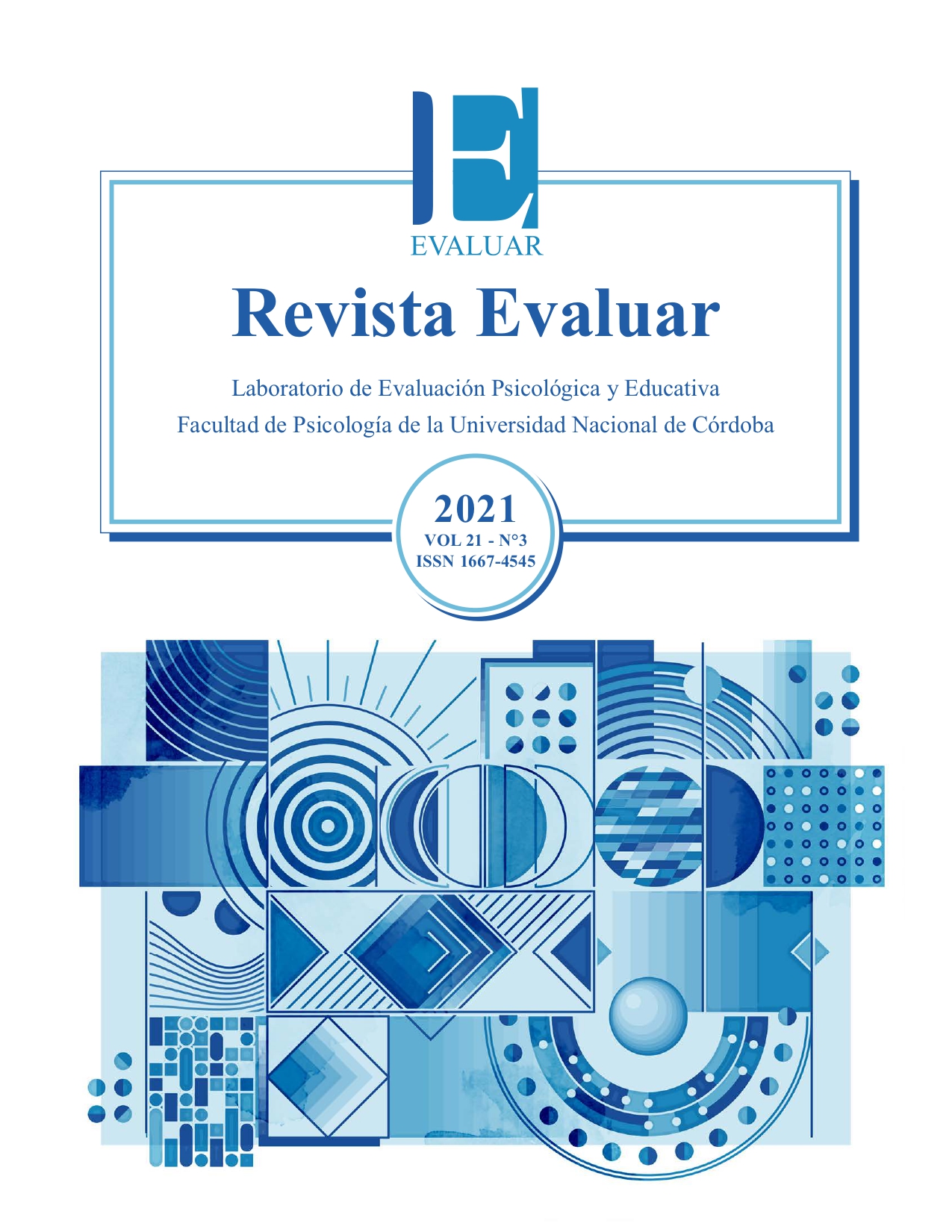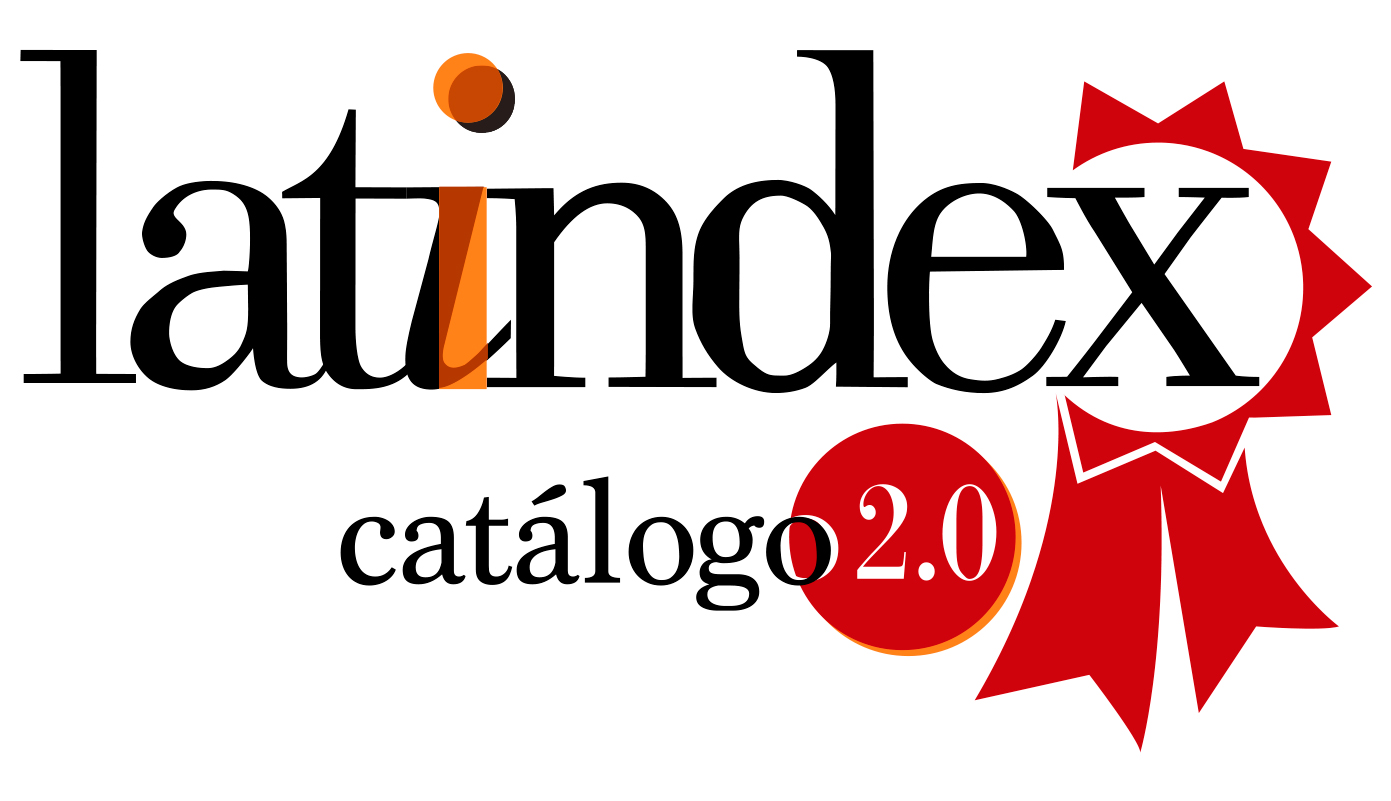Creative Actions Questionnaire: Psychometric Properties of the Abbreviated Version (CAC42)
DOI:
https://doi.org/10.35670/1667-4545.v21.n3.36308Keywords:
creative actions, evaluation of creativity, everyday creativity, social participationAbstract
The objective is to build an abbreviated version of the Creative Actions Questionnaire (CAC) and analyze its psychometric properties. The CAC includes scales that evaluate the frequency of participation in creative actions in seven domains: literature; plastic arts and crafts; science and technology; performing arts; music; social participation and daily creativity. The sample was made up of 1509
people over 18 years of age who reside in different Argentine provinces. The data collection instruments were: CAC, Biographical Inventory of Creative Behaviors (BICB), and sociodemographic and leisure questionnaire. The confirmatory factor analysis showed an adequate fit of the model. The results indicate significant differences according to participation in leisure activities. We observe significant and moderate correlations between the abbreviated version of the CAC and the BICB. The results show that the abbreviated version of the CAC complies with technical standards and constitutes a contribution for the evaluation of creative
actions in different domains.
Downloads
References
Acar, S., & Runco, M. A. (2019). Divergent thinking: New methods, recent research, and extended theory. Psychology of Aesthetics, Creativity, and the Arts, 13(2), 153-158. doi: 10.1037/aca0000231
Adams-Price, C. E., & Steinman, B. A. (2007). Crafts and generative expression: A qualitative study of the meaning of creativity in women who make jewelry in midlife. The International Journal of Aging and Human Development, 65(4), 315-333. doi: 10.2190/AG.65.4.c
Aranguren, M., & Irrazabal, N. (2012). Diseño de una escala para la evaluación del comportamiento creativo. Ciencias Psicológicas, 6(1), 29-41. doi: 10.22235/cp.v6i1.60
Arbuckle, J. L. (2014). Amos (Versión 23.0). [Software de cómputo]. Chicago: IBM SPSS.
Barbot, B., Hass, R. W., & Reiter-Palmon, R. (2019). Creativity assessment in psychological research: (Re)setting the standards. Psychology of Aesthetics, Creativity, and the Arts, 13(2), 233-240. doi: 10.1037/aca0000233
Baer, J. (2012). Domain specificity and the limits of creativity theory. The Journal of Creative Behavior, 46(1), 16-29. doi: 10.1002/jocb.002
Batey, M. (2007). A psychometric investigation of everyday creativity (Tesis de doctorado). University College, London.
Batey, M., Furnham, A., & Safiullina, X. (2010). Intelligence, general knowledge and personality as predictors of creativity. Learning and Individual Differences, 20(5), 532-535. doi: 10.1016/j.lindif.2010.04.008
Benedek, M., Bruckdorfer, R., & Jauk, E. (2019). Motives for Creativity: Exploring the what and why of everyday creativity. The Journal of Creative Behavior, 54(3), 610-625. doi: 10.1002/jocb.396
Benedek, M., Christensen, A. P., Fink, A., & Beaty, R. E. (2019). Creativity assessment in neuroscience research. Psychology of Aesthetics, Creativity, and the Arts, 13(2), 218-226. doi: 10.1037/aca0000215
Carson, S. H., Peterson, J. B., & Higgins, D. M. (2005). Reliability, validity, and factor structure of the Creative Achievement Questionnaire. Creativity Research Journal, 17(1), 37-50. doi: 10.1207/s15326934crj1701_4
Conner, T. S., DeYoung, C. G., & Silvia, P. J. (2018). Everyday creative activity as a path to flourishing. The Journal of Positive Psychology, 13(2), 181-189. doi: 10.1080/17439760.2016.1257049
Conner, T. S., & Silvia, P. J. (2015). Creative days: A daily diary study of emotion, personality, and everyday creativity. Psychology of Aesthetics, Creativity, and the Arts, 9(4), 463-470. doi: 10.1037/aca0000022
Diedrich, J., Jauk, E., Silvia, P. J., Gredlein, J. M., Neubauer, A. C., & Benedek, M. (2018). Assessment of real-life creativity: The Inventory of Creative Activities and Achievements (ICAA). Psychology of Aesthetics, Creativity, and the Arts, 12(3), 304-316. doi: 10.1037/aca0000137
Elisondo, R., & Donolo, D. (2016). Construcción y análisis de las propiedades psicométricas del Cuestionario de Acciones creativas en población argentina. PSIENCIA. Revista Latinoamericana de Ciencia Psicológica, 8(1), 1-21. Recuperado de https://www.redalyc.org/journal/3331/333145838006
Elisondo, R., & Donolo, D. (2018). Contextos y creatividad. Variables sociodemográficas y datos normativos en el Test CREA. Revista Evaluar, 18(3), 14-29. doi: 10.35670/1667-4545.v18.n3.22202
Elisondo, R. C., Donolo, D. S., & Corbalan-Berná, F. J. (2009). Evaluación de la Creatividad ¿Relaciones con inteligencia y personalidad? Revista Iberoamericana de Diagnóstico y Evaluación -e Avaliação Psicológica, 2(28), 67-79. Recuperado de https://www.aidep.org/es/numeros-publicados
Elisondo, R. C., & Vargas, A. (2019). Women’s everyday creative activities: A qualitative study. Creativity. Theories-Research-Applications, 6(1), 91-111. doi: 10.1515/ctra-2019-0006
Gandolfo, E., & Grace, M. (2010) Women doing it forever: The everyday creativity of women craftmakers. Australian and New Zealand Journal of Art Therapy, 5(1), 29-44. Recuperado de https://www.jocat-online.org
Garcês, S., Pocinho, M., Neves de Jesus, S. N., Viseu, J., Imaginário, S., & Muglia-Wechsler, S. M. (2015). Estudo de Validação da Escala de Personalidade Criativa. Revista Iberoamericana de Diagnóstico y Evaluación - e Avaliação Psicológica, 2(40), 17-24. Recuperado de https://www.aidep.org/es/numeros-publicados
Genoe, M. R., & Liechty, T. (2017) Meanings of participation in a leisure arts pottery programme. World Leisure Journal, 59(2), 91-104. doi: 10.1080/16078055.2016.1212733
Glăveanu, V. P. (2013). Rewriting the language of creativity: The five A’s framework. Review of General Psychology, 17(1), 69-81. doi: 10.1037/a0029528
Glăveanu, V. P. (2014). The psychology of creativity: A critical reading. Creativity: Theories-Research-Applications, 1(1), 10-32. doi: 10.15290/ctra.2014.01.01.02
Glăveanu, V. P. (2018). Educating which creativity? Thinking Skills and Creativity, 27, 25-32. doi: 10.1016/j.tsc.2017.11.006
Glăveanu, V. P., Hanchett-Hanson, M., Baer, J., Barbot, B., Clapp, E. P., Corazza, G. E., ... & Stenberg, R. J. (2019). Advancing creativity theory and research: A socio‐cultural manifesto. The Journal of Creative Behavior, 54(3), 741-745. doi: 10.1002/jocb.395
Hegarty, C. B. (2009). The value and meaning of creative leisure. Psychology of Aesthetics, Creativity, and the Arts, 3(1), 10-13. doi: 10.1037/a0014879
Hocevar, D. (1979). The development of the Creative Behavior Inventory. Annual Meeting of the Rocky Mountain Psychological Association. Las Vegas, USA. Recuperado de https://eric.ed.gov
IBM. (2011). SPSS Statistics for Windows (Version 20.0). [Software de cómputo]. Armonk, NY: IBM Corp.
Jamovi project. (2021). Jamovi (Version 1.6). [Software de cómputo]. Recuperado de https://www.jamovi.org
Jmetrik Group. (2014) Jmetrik (Version 4.4.1). [Software de cómputo]. Recuperado de https://itemanalysis.com/jmetrik-download
Karwowski, M., & Beghetto, R. A. (2018). Creative behavior as agentic action. Psychology of Aesthetics, Creativity, and the Arts, 13(4), 402-415. doi: 10.1037/aca0000190
Kaufman, J. C. (2006). Self-reported differences in creativity by gender and ethnicity. Applied Cognitive Psychology, 20(8), 1065-1082. doi: 10.1002/acp.1255
Kaufman, J. C. (2012). Counting the muses: Development of the Kaufman Domains of Creativity Scale (K-DOCS). Psychology of Aesthetics, Creativity, and the Arts, 6(4), 298-308. doi: 10.1037/a0029751
McCabe, M., & de Waal-Malefyt, T. (2015). Creativity and cooking: Motherhood, agency and social change in everyday life. Journal of Consumer Culture, 15(1), 48-65. doi: 10.1177/1469540513493202
Modrzejewska-Świgulska, M. (2018). Professional Competences. Reconstruction of the opinions of Polish female directors. Creativity. Theories-Research-Applications, 5(1), 72-83. doi: 10.1515/ctra-2018-0005
Montero, I., & León, O. G. (2007). A guide for naming research studies in Psychology. International Journal of Clinical and Health Psychology, 7(3), 847-862. Recuperado de https://aepc.es/ijchp/busca.php
Paek, S. H., & Runco, M. A. (2017). Dealing with the criterion problem by measuring the quality and quantity of creative activity and accomplishment. Creativity Research Journal, 29(2), 167-173. doi: 10.1080/10400419.2017.1304078
Richards, R. (2010). Everyday creativity. Process and way of life - Four key issues. In J. C. Kaufman & R. J. Sternberg (Eds.), The Cambridge Handbook of Creativity (pp. 189-215). Cambridge: Cambridge University Press. doi: 10.1017/CBO9780511763205.013
Silvia, P. J., Beaty, R. E., Nusbaum, E. C., Eddington, K. M., Levin-Aspenson, H., & Kwapil, T. R. (2014). Everyday creativity in daily life: An experience-sampling study of “little c” creativity. Psychology of Aesthetics, Creativity, and the Arts, 8(2), 183-188. doi: 10.1037/a0035722
Silvia, P. J., Cotter, K. N., & Christensen, A. P. (2017). The creative self in context: Experience sampling and the ecology of everyday creativity. In M. Karwowski & J. C. Kaufman (Eds.), The creative self: Effect of beliefs, self-efficacy, mindset, and identity (pp. 275-288). Cambridge, Massachusetts: Elsevier Academic Press. doi: 10.1016/B978-0-12-809790-8.00015-7
Sternberg, R. J. (2009). Domain-generality versus domain-specificity of creativity. In P. Meusburger, J. Funke & E. Wunder (Eds.), Milieus of Creativity (pp. 25-38). Dordrecht: Springer. doi: 10.1007/978-1-4020-9877-2_3
Wolfradt, U., & Pretz, J. E. (2001). Individual differences in creativity: Personality, story writing and hobbies. European Journal of Personality, 15(4), 297-310. doi: 10.1002/per.409
Downloads
Published
How to Cite
Issue
Section
License
Copyright (c) 2021 Romina Cecilia Elisondo, Danilo Silvio Donolo

This work is licensed under a Creative Commons Attribution 4.0 International License.
Revista Evaluar aplica la Licencia Internacional de Atribuciones Comunes Creativas (Creative Commons Attribution License, CCAL). Bajo esta licencia, los autores retienen la propiedad de copyright de los artículos pero permiten que, sin que medie permiso de autor o editor, cualquier persona descargue y distribuya los artículos publicados en Evaluar. La única condición es que siempre y en todos los casos se cite a los autores y a la fuente original de publicación (i.e. Evaluar). El envío de artículos a Evaluar y la lectura de los mismos es totalmente gratuito.




_(3).jpg)



.jpg)



